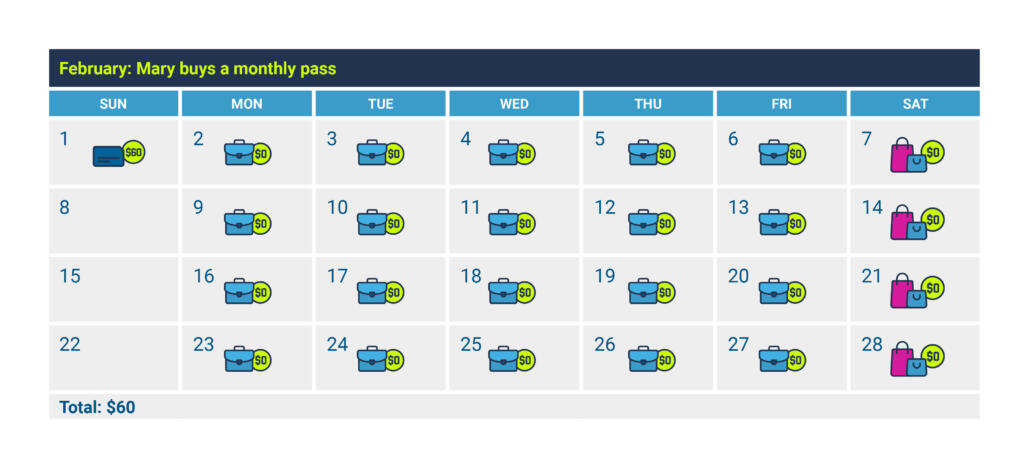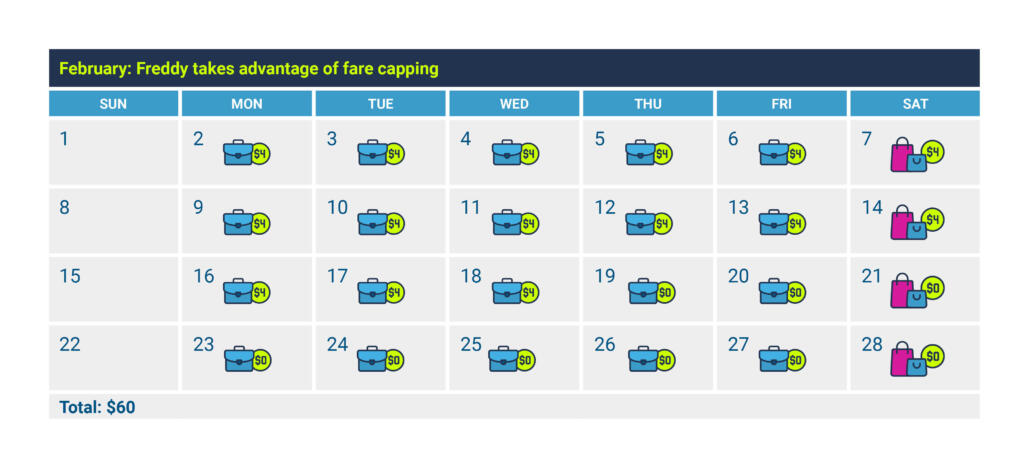We expect our chosen mode of transportation to be fast, easy, and cost-efficient. This is especially true for daily commutes that can make or break our day.
Having a logistically and financially manageable way of getting to school or work often determines which job or academic opportunities you pursue. That might mean paying upfront for a monthly pass to save money over the month. But should the affordability of a monthly pass determine whether someone can go for better-paying job opportunities or have access to more opportunities? Fare capping is a fair payment option.
Post-pandemic, transit agencies across the country are eager to bring back riders and level the playing field for them. The cost of commuting shouldn’t hinder people from taking opportunities that bolster their income or skills. This is why many transit agencies have already embraced fare capping to boost ridership and demonstrate how equitable mobility promotes upward mobility for their communities.
What is fare capping?
Transit fare capping is a fare payment model that gives riders the savings of a monthly, weekly, or daily pass without having to pay the full cost of that pass up front. It allows riders to pay as they go, knowing that the system will automatically stop debiting the cost of single ride fares once they meet the threshold amount of the recurrent (or unlimited) pass.
How does fare capping work?
Let’s say a single bus ticket costs $2, so a rider who commutes to and from work 40 times in a typical month would pay $80 for the month. If the same rider runs one round-trip errand per week, they would be spending an additional $16, for a total of $96. If a monthly pass costs $60, they can save $36.
That means riders who can afford to pay $60 upfront for a monthly pass benefit from the discount while those who can’t afford it or ride too inconsistently to justify an upfront monthly pass lose out on the cost savings.
When applied to a shorter-term pass, consider that the transit system charges $2 per ride or $12 for an unlimited weekend pass. A tourist is spending the weekend sightseeing primarily by bus but might consider rideshare or walking between attractions, so they can’t estimate how many rides they will take. If they take 3 roundtrip rides per day for a total of 12 rides, they would spend $24 if they paid per ride, or just $12 if they paid for a weekend pass. With fare capping, the rider is only charged $12 – the same cost as an unlimited weekend pass – plus the decision-making would be simplified for them.



When you adopt fare capping, your riders can pay as they go using a smart card, your mobile ticketing app, mobile payments, or debit/credit cards, and still receive the same discounts recurrent pass purchasers get once they take enough rides. After they complete enough full-priced, single rides to meet the term cost, the system will automatically stop charging them for future rides for the remainder of the day, week, or month. If they don’t hit their cap, there’s no wasted money; they’ll have only paid for what they used.
How does fare capping benefit riders?
Simplify the rider experience
Fare capping is appealing to riders because it takes away some of their travel stress. Regular riders and visitors don’t need to download another app or figure out what type of ticket or pass makes the most sense for their needs. They can just pull out whatever’s in their pocket, tap, and pay when they board the bus. The system will give them the best-value fare with zero need for the customer to calculate anything. As more passengers go cashless with fare capping, the faster the boarding process becomes, which means riders can expect to be on time for work, school, or other time-sensitive engagements.
Empower equitable mobility
Riders who would benefit the most from the cost savings of a recurrent pass are typically the ones who are least able to afford it, and instead pay more than those who can. Fare capping addresses this disparity by giving all riders the same fare savings. Without the financial pressure to buy an unlimited pass, they can refocus their attention on opportunities that support their upward mobility.
When transit agencies expand payment and discount flexibility through fare capping, it shows their commitment to upholding social good within their communities.
How can transit agencies ensure that all riders can benefit from fare capping?
47 percent of payments for amounts under $10 are still made in cash. This customer preference impacts fare collection on buses in particular, where fares usually fall under $10. While many customers have quickly adopted tap-and-go fare payment, many unbanked or underbanked riders must pay in cash out of economic necessity.
To balance modern fare collection innovations and support equitable mobility, transit agencies can implement cash digitization, which allows unbanked riders to turn their cash into card-based or account-based digital credit. In doing so, unbanked riders can benefit from not just fare capping, but transfers, multimodal integrations, and other digital fare structures that their banked counterparts enjoy.
Socially conscious transit systems understand that helping their customers thrive means meeting them where they are with inclusive technologies.
Fair fares: A stepping stone to more opportunity
As an essential service to all cities, transit systems are uniquely poised to prioritize equitable mobility to strengthen communities. Your community feels seen, heard, and validated when their everyday tasks become everyday conveniences.